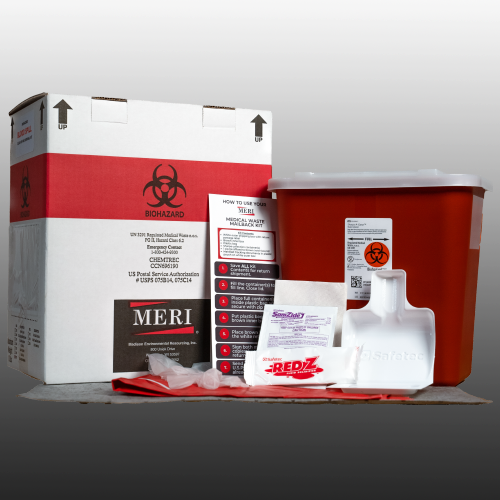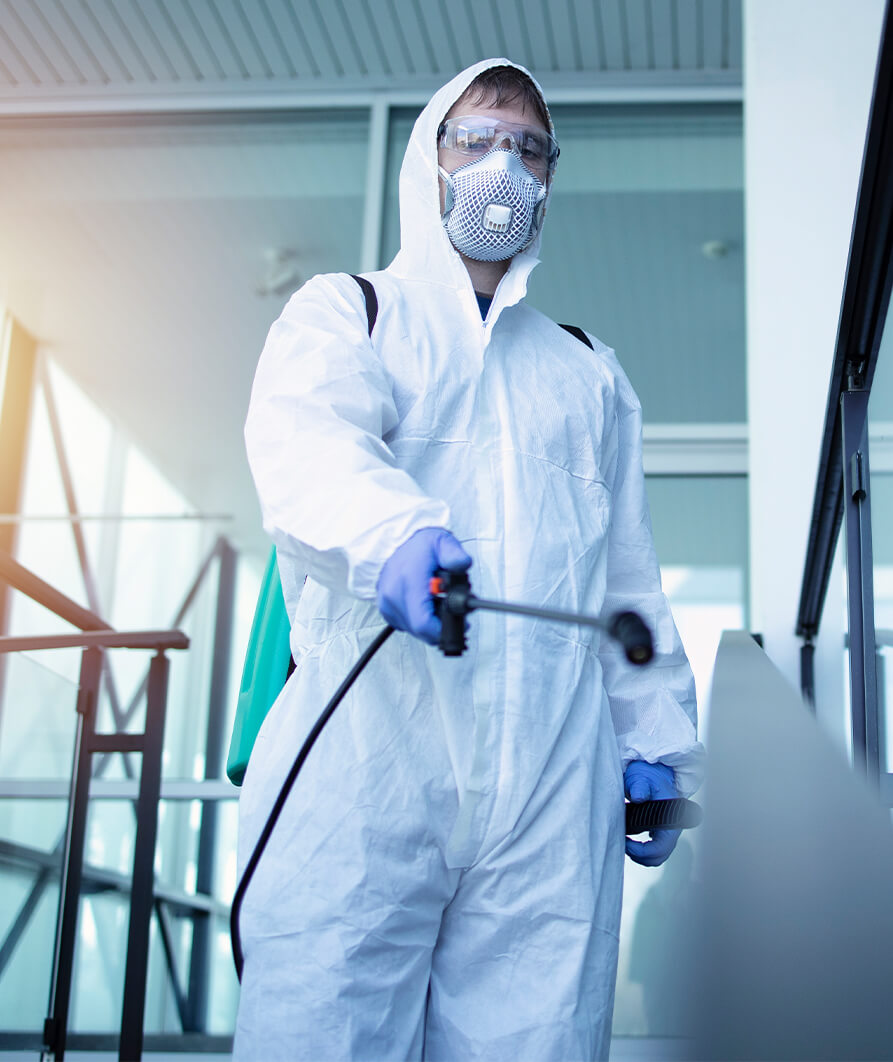Clandestine Lab Cleanup: Comprehensive Purification for Hazardous Sites
Wiki Article
Expert Biohazard Cleansing and Purification for Blood, Bodily Fluids, and Hazardous Products
The potential wellness dangers connected with direct exposure to biohazards highlight the essential need for precise handling and comprehensive cleanup. As we browse the complex landscape of biohazard clean-up, understanding the subtleties of laws, compliance, and the customized tools at play becomes crucial in guaranteeing a safe and extensive purification process.
Wellness Dangers of Biohazard Exposure
Direct exposure to biohazards poses significant health dangers that can lead to serious effects for people and areas alike. Biohazards incorporate a variety of organic compounds, including blood, bodily liquids, mold, microorganisms, infections, and other potentially contagious products. When individuals come into call with these biohazards, whether through crashes, incorrect handling, or environmental direct exposure, they deal with the danger of having significant diseases or illness.Among the primary health and wellness threats connected with biohazard exposure is the transmission of contagious illness. Bloodborne virus such as HIV, liver disease B and C, and different microorganisms can be existing in biohazardous products, positioning a direct hazard to human wellness. Breathing in airborne biohazards like mold and mildew spores or coming into contact with infected surfaces can likewise lead to respiratory issues, allergies, and various other adverse health and wellness impacts.
Moreover, biohazard direct exposure can have long-lasting health and wellness ramifications, with some illness materializing years after the first get in touch with (Blood Cleanup). As a result, it is crucial to prioritize appropriate biohazard cleaning and decontamination to minimize these wellness risks and ensure the safety and security of people and neighborhoods

Specialized Educating for Biohazard Cleanup
When it involves taking care of biohazard clean-up efficiently and safely, specialized training plays a basic function in making certain appropriate decontamination treatments are followed. Biohazard cleanup needs certain understanding and abilities to properly minimize dangers related to bloodborne microorganisms, physical liquids, and hazardous materials. Professionals trained in biohazard cleanup go through strenuous direction on how to securely handle, eliminate, and dispose of biohazardous materials to stop contamination and direct exposure.Specialized training for biohazard clean-up covers a variety of essential subjects, including proper personal protective devices (PPE) use, bloodborne microorganism understanding, decontamination strategies, and hazardous waste disposal protocols. Individuals learnt biohazard cleanup are geared up with the essential expertise to examine contamination degrees, determine prospective threats, and apply appropriate cleaning procedures in conformity with regulative standards.
Constant training and education are critical in the area of biohazard clean-up to stay upgraded on the most recent decontamination modern technologies, safety and security procedures, and regulations. By purchasing specialized training, biohazard cleanup professionals can effectively respond to emergency situation clean-up circumstances and safeguard both public health and the setting.
Value of Proper Purification Methods
Utilizing proper purification strategies is essential in biohazard clean-up to efficiently eliminate hazardous products and decrease wellness risks. Reliable purification not just ensures the elimination of noticeable traces of blood, bodily liquids, and other biohazards however also targets unseen virus that might position major health hazards otherwise appropriately eradicated. By adhering to stringent decontamination protocols, educated professionals can substantially lower the risk of exposure to unsafe bacteria, infections, and germs that might result in infections or diseases.Appropriate decontamination methods include the usage of customized devices and anti-bacterials that are specifically made to neutralize biohazards efficiently. Extensive cleaning and sanitation of infected areas are vital to prevent the spread of microorganisms and make sure a risk-free environment for residents. Additionally, the correct disposal of biohazardous waste following decontamination procedures is important in avoiding contamination of various other surface areas or people.

Devices and Tools for Safe Cleaning
The correct devices and tools play a crucial function in ensuring the secure and efficient cleanup of biohazardous materials. When taking care of blood, bodily fluids, or harmful materials, biohazard cleansing professionals rely upon specialized gear to reduce exposure dangers and thoroughly decontaminate the afflicted area. Individual protective devices (PPE) such as gloves, coveralls, masks, and safety glasses are important to shield against straight contact with potentially infectious materials. Additionally, biohazard cleaning kits including anti-bacterials, absorptive materials, and biohazard bags are utilized to securely have and dispose of polluted items. Blood Cleanup.Advanced cleansing devices like hospital-grade disinfectants, HEPA-filtered vacuums, and misting equipments are used to disinfect surfaces and get rid of biohazards successfully. Specialized devices such as sharps containers and biohazard garbage disposal containers are utilized to safely handle sharp objects and biohazardous waste products. By utilizing the right devices and devices, biohazard cleansing specialists can make certain a comprehensive cleaning process that prioritizes security and decreases health and wellness threats for both employees and owners of the damaged area.
Regulations and Conformity in Biohazard Cleaning
Correct adherence to laws and compliance requirements is paramount in biohazard cleansing to make sure the safety of both workers and the atmosphere. Government companies such as OSHA (Occupational Security and Health Administration) and the EPA (Environmental Security Company) have developed certain guidelines for biohazard cleaning treatments to decrease health risks and ecological contamination. These policies cover a range of aspects including the handling, transport, additional reading and disposal of biohazardous products, along with the needed training and protective equipment required for personnel web associated with the clean-up process.Biohazard cleaning firms have to stay current with these guidelines to ensure that their operations satisfy the required security requirements. Failing to abide with these regulations can result in extreme effects, consisting of fines, lawsuit, and threatening the wellness of individuals and the setting. By complying with stringent guidelines and compliance actions, biohazard cleansing firms can successfully mitigate threats and make sure a thorough and risk-free cleaning process for all parties involved.
Verdict
In verdict, biohazard cleaning and decontamination call for specialized training, correct techniques, and adherence to laws. Exposure to blood, bodily liquids, and dangerous materials poses considerable health and wellness threats, making it vital to make use of the right devices and tools for safe clean-up. By adhering to rigorous procedures and guidelines, professionals can properly mitigate the risks connected with biohazard direct exposure and ensure the security of both themselves view website and others.
As we navigate the complex landscape of biohazard clean-up, understanding the nuances of regulations, conformity, and the specific tools at play ends up being important in ensuring a thorough and safe purification procedure. (Blood Cleanup)
When it comes to taking care of biohazard cleaning successfully and safely, specialized training plays a basic function in making sure appropriate decontamination treatments are complied with.Making use of proper decontamination strategies is crucial in biohazard clean-up to efficiently minimize and remove harmful materials wellness dangers. Furthermore, biohazard cleansing packages including anti-bacterials, absorbing materials, and biohazard bags are made use of to securely get rid of and have of infected products.
Government firms such as OSHA (Occupational Safety And Security and Wellness Administration) and the EPA (Environmental Defense Agency) have actually established certain standards for biohazard cleaning procedures to lessen health and wellness dangers and environmental contamination.
Report this wiki page